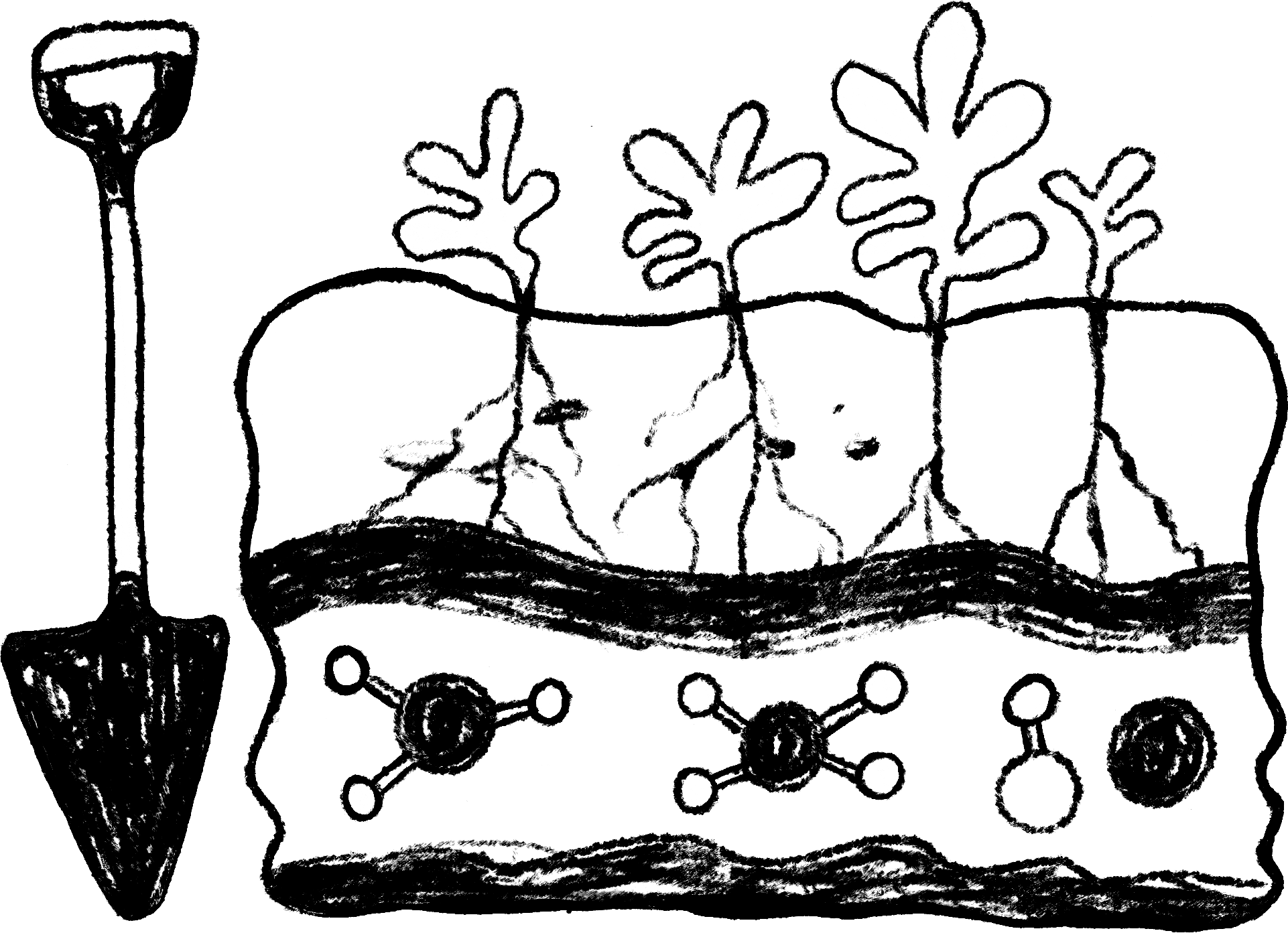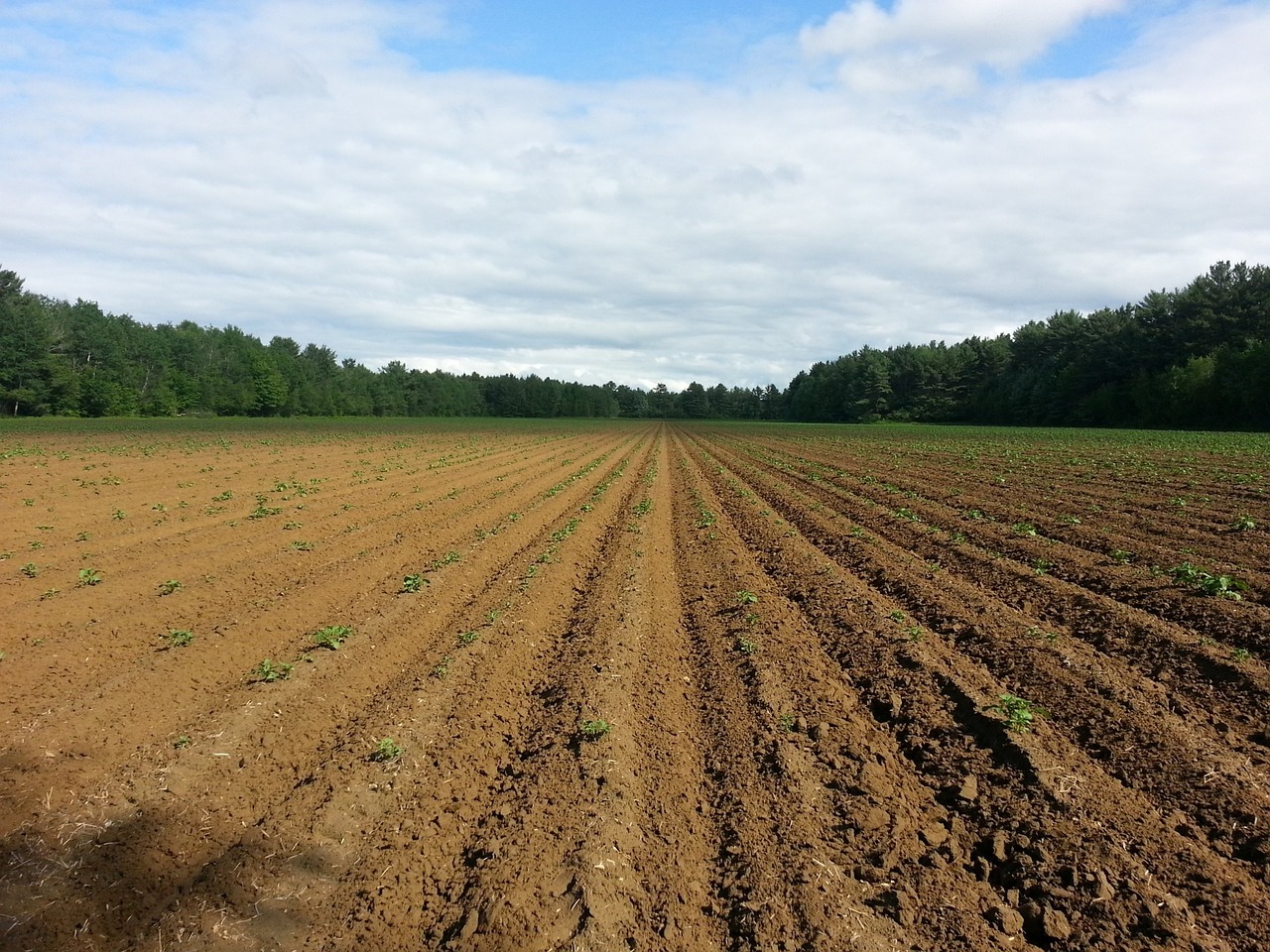 Soil is made up of three different particle sizes in varying amounts: sand, silt, and clay. Clay are the smallest particles, yet they hold the most water and nutrients. Clay particles are charged particles and can hold onto the ions in nutrient compounds, allowing roots to easily absorb and use them. The disadvantage of clay soil is that it can become water-logged and when it dries, the soil surface may become hard as rock. Clay soils also may become easily compacted, since the spaces between the particles are so small. Water does not easily move through clay soils, so it is said to be less permeable than other soils.
Soil is made up of three different particle sizes in varying amounts: sand, silt, and clay. Clay are the smallest particles, yet they hold the most water and nutrients. Clay particles are charged particles and can hold onto the ions in nutrient compounds, allowing roots to easily absorb and use them. The disadvantage of clay soil is that it can become water-logged and when it dries, the soil surface may become hard as rock. Clay soils also may become easily compacted, since the spaces between the particles are so small. Water does not easily move through clay soils, so it is said to be less permeable than other soils.
Sand is the largest soil particle. Sandy soil does not hold nutrients or water. Generally, sandy soils do not have a lot of organic material nor many microbes. Without the organic material to feed on, there isn’t much for microorganisms to eat. Sandy soils are the most permeable and porous, with large spaces between the particles.
Silt is another soil particle, between clay and sand in terms of size. Silty soils result from wind, water, ice, and snow carrying dust particles. River sediments are usually classified as silt. Silt is found everywhere and most soils are a combination of all three soil particles. Other materials found in soil include organic matter (once-living material, commonly referred to as humus—not to be confused with hummus that you can eat!), along with nutrients (forms of nitrogen, phosphate, and potassium) and minerals (such as sulfur, calcium, boron, etc).
The objective of this lesson is to introduce students to the Dust Bowl and pose the question: How might we avoid another Dust Bowl-type of event?
Soil Texture
Soil is composed of particles that are categorized into groups according to their size, as shown in the table below.  The sediment sizes and percentages of each in a sample are determined by the history of geologic and climatic events in an area.
The sediment sizes and percentages of each in a sample are determined by the history of geologic and climatic events in an area.
One method of classifying soils is to measure the relative amounts of sand, silt, and clay in a soil sample, then use a soil triangle to determine the soil type. In this lab, the textural classification of a soil sample will be determined by measuring the relative amounts of sand, silt, and clay particles, then using a soil triangle to determine the soil type. The comparative volumes of sand, silt, and clay will be determined since the different-sized particles will settle out of the soil/water mixture at different rates and different levels with the largest particles on the bottom and the smallest on the top.
This can be accomplished in two different ways, one by feel and the other by volume. It is best to have students attempt both methods on the same soil, then compare their results. Texture by feel is subjective or qualitative following steps in a flow chart (see flow chart).
Students will begin with a sample of soil that covers the palm of the hand, that has had organic material and foreign debris removed. Wet the soil by pouring 3–5 ml of water on top in the cupped palm. The soil should be kneaded to work in the water; add more water as kneading to make a ball. It should feel like putty. Answer the questions as posed on the flow chart. (See What is a Soil Ribbon? for a demonstration of a soil ribbon).
Texture by volume is quantitative and can be accomplished by creating a soil column in a flatbottomed container with a lid or a graduated cylinder in which a quantity of water is added to soil, along with a small amount of borax or non-foaming dish soap, shaken vigorously for at least two minutes, then allowed to settle for 24–48 hours1. See step-by-step demonstration.
The layers of soil will settle out with sand on the bottom, silt in the middle, and clay on the top. Students then measure the height of each level, then add the heights together to get a total soil column height. Divide each layer by the total to determine the percentage of each soil particle in the column. Use the soil texture triangle to find out what soil type you have. 
Soil Nutrient Testing
The three major nutrients found in soil are nitrogen (N), phosphorus (P), and potassium (K). N and P usually occur in the form of compounds (Nitrate and Phosphate) while K is generally available in soil solution only. pH can play an important role in soils as it controls nutrient uptake by roots. If the soil is too acidic, other ions can leach out of the soil and create additional problems with run off.
Soil is best conserved when covered or anchored with plant roots. Loose soil can be easily eroded by wind, rain, ice and snow. When soil erodes, it may enter into waterways, carrying nutrients with it that can impact the health of streams.
Organic matter in soils can vary greatly. Generally, the darker the soil, the more organic matter found in the soil. “Properties influenced by organic matter include: soil structure; moisture-holding capacity; diversity and activity of soil organisms, both those that are beneficial and harmful to crop production; and nutrient availability. It also influences the effects of chemical amendments, fertilizers, pesticides and herbicides.” (FAO) Large amounts of organic matter may indicate that there are naturally occurring decomposers that will cycle nutrients through the soil.
Humans have made use of soils in order to efficiently plant and raise crops for food, not just for people, but animals as well. In the hundreds of years humans have farmed, there have been many developments in technology. Most farmers have soils on their farms tested following a grid pattern, every 2.5 to 5 acres, and based on the results, they will apply only the inputs of fertilizer that the soils need.
Soil Stability
Soil stability or structure is a result of healthy microbes, plant cover, and adequate nutrient flow. The test used in this activity is referred to as a slake test. As soil is immersed in water, portions of the soil will slake off into the water, if the soil has little glomulin or microbe activity. Humans can improve the stability of a soil by rotating crops, having plants in soil all year round, and reducing the amount of cultivation or tillage.

 Soil is made up of three different particle sizes in varying amounts: sand, silt, and clay. Clay are the smallest particles, yet they hold the most water and nutrients. Clay particles are charged particles and can hold onto the ions in nutrient compounds, allowing roots to easily absorb and use them. The disadvantage of clay soil is that it can become water-logged and when it dries, the soil surface may become hard as rock. Clay soils also may become easily compacted, since the spaces between the particles are so small. Water does not easily move through clay soils, so it is said to be less permeable than other soils.
Soil is made up of three different particle sizes in varying amounts: sand, silt, and clay. Clay are the smallest particles, yet they hold the most water and nutrients. Clay particles are charged particles and can hold onto the ions in nutrient compounds, allowing roots to easily absorb and use them. The disadvantage of clay soil is that it can become water-logged and when it dries, the soil surface may become hard as rock. Clay soils also may become easily compacted, since the spaces between the particles are so small. Water does not easily move through clay soils, so it is said to be less permeable than other soils. The sediment sizes and percentages of each in a sample are determined by the history of geologic and climatic events in an area.
The sediment sizes and percentages of each in a sample are determined by the history of geologic and climatic events in an area.